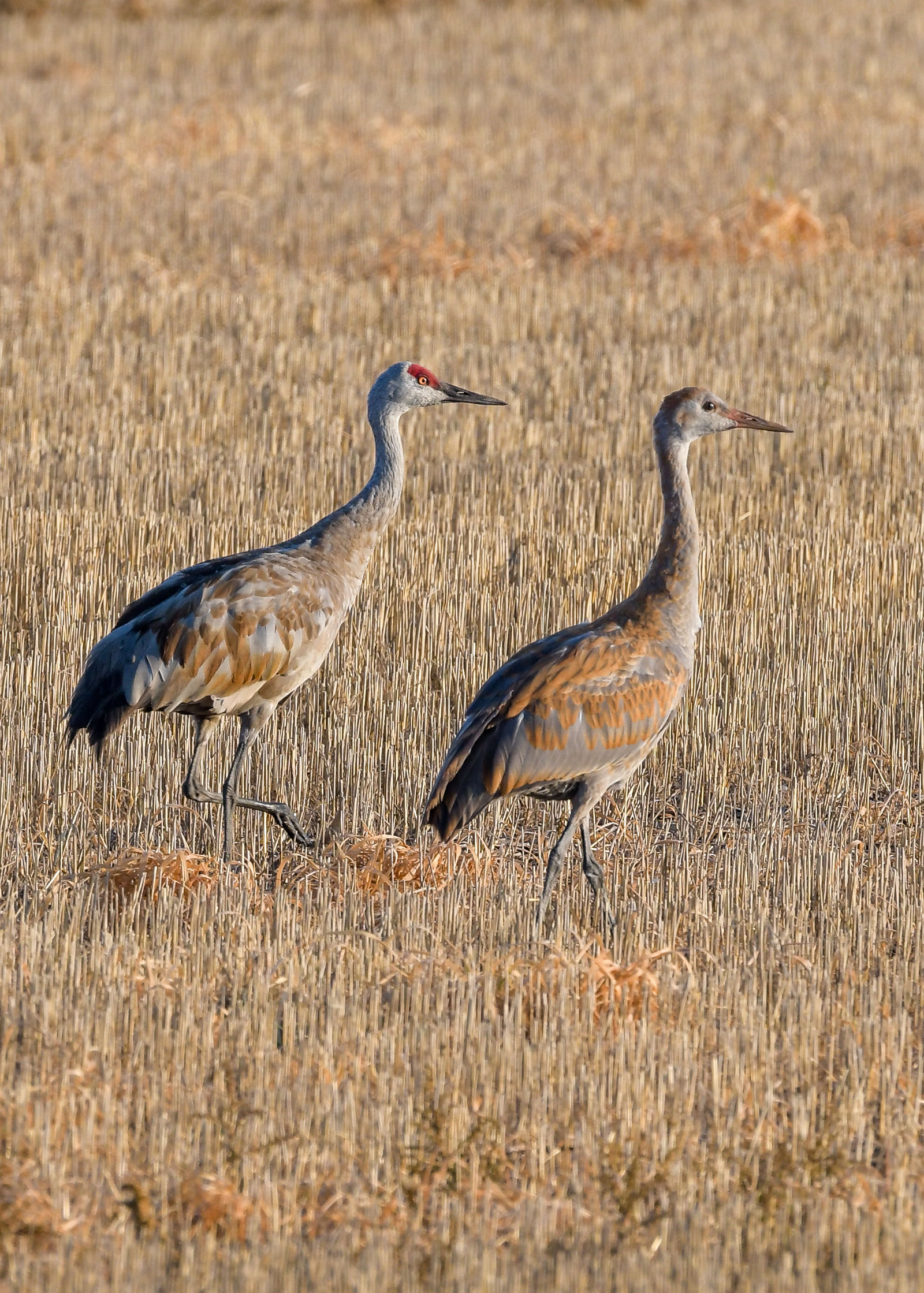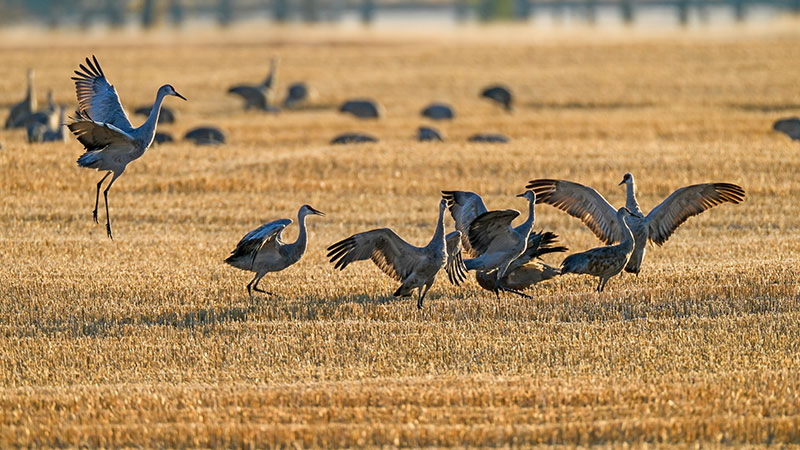Stopover State
Ron Wilson

Beginning sometime in February, the majority of the world’s sandhill cranes collect on Nebraska’s Platte River to feed and rest in preparation for laborious journeys north to Alaska, Siberia and elsewhere where these tall, unmistakable birds will breed and raise a chick or two if the stars align.
With hundreds of thousands of sandhill cranes staging along the shallow, meandering Platte, you’d think if the wind was right, it would be almost possible to hear these enthusiastically vocal birds here in North Dakota before they even commit to winging it in our direction.
Yet, with patience and assurance that we remain in their age-old flight plan, we’ll encounter them soon enough.
Blessed with long, coiled windpipes that boost their distinctive, rattling, far-reaching calls, we’ll hear the first wave of sandhills in, say, early April.
With necks craned we’ll look skyward in search of cranes that are always circling at altitudes that are seemingly too high.
But with persistence, and a lucky break in the cloud cover, we’ll eventually spot them.
“While sandhill cranes typically take their time when they’re heading south to wintering grounds in fall, their spring migration through North Dakota is a lot faster by comparison as they’re hustling to get to the breeding grounds and get that process kicked off,” said John Palarski, North Dakota Game and Fish Department migratory game bird biologist. “By the end of April, the bulk of the cranes have migrated through North Dakota.”
Palarski said there are four populations of sandhill cranes that migrate through the United States — Rocky Mountain, Lower Colorado River, Eastern and Mid-continent.
The latter population of birds are those that color North Dakota’s skies gray in spring and fall, and to the pedestrian looking for, say, color or size differences between one group to the next, there’s not much to distinguish one population of sandhills from the others.
“Most are differentiated just by where they are breeding and where their migratory paths take them,” Palarski said.
Biologists conduct sandhill crane population surveys when the birds are congregated along the Platte River.

This year’s late March survey indicated the Mid-continent population is stable to increasing.
“What’s interesting about the Mid-continent population of sandhill cranes is that they have four main breeding affiliations or areas where they’re breeding,” Palarski said.
“Some of those birds go up to western Alaska and eastern Siberia to nest, while some go into eastern Alaska and western Canada.
Another group goes to far northern Canada, and the fourth breeding affiliation is kind of in that northwestern Minnesota area and eastern and central Canada as well.”
North Dakota is an incredibly important stopover site for cranes making long-haul migrations to breeding grounds.
“What the cranes are looking for in North Dakota are our shallow wetlands where they can rest and refuel,” Palarski said.
“Considering that some of these birds are migrating a couple thousand miles to places like Siberia, Alaska and northern Canada, North Dakota plays a key role during their migration.”
The menu to refuel for the long flight north is diverse for these birds.

